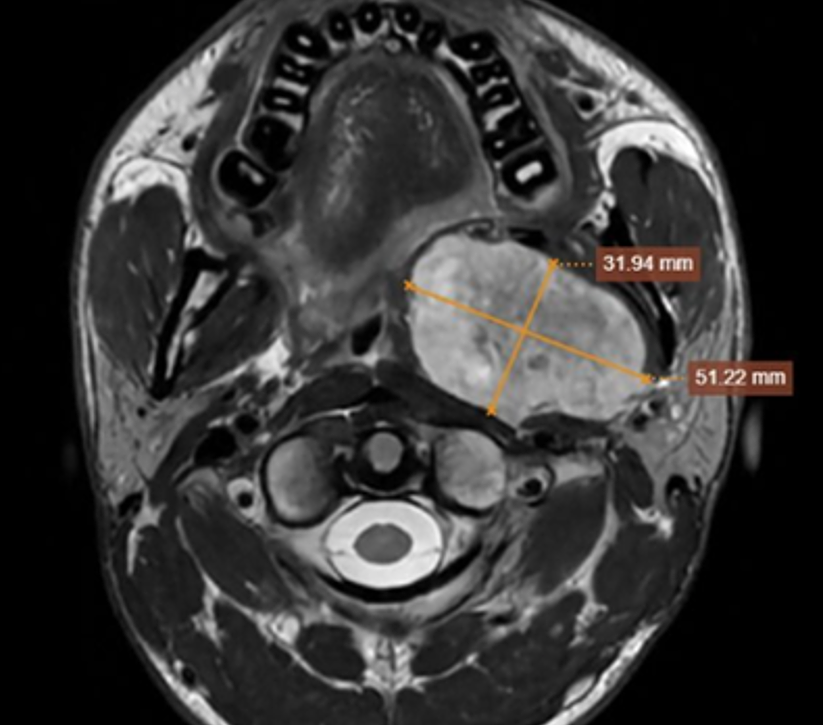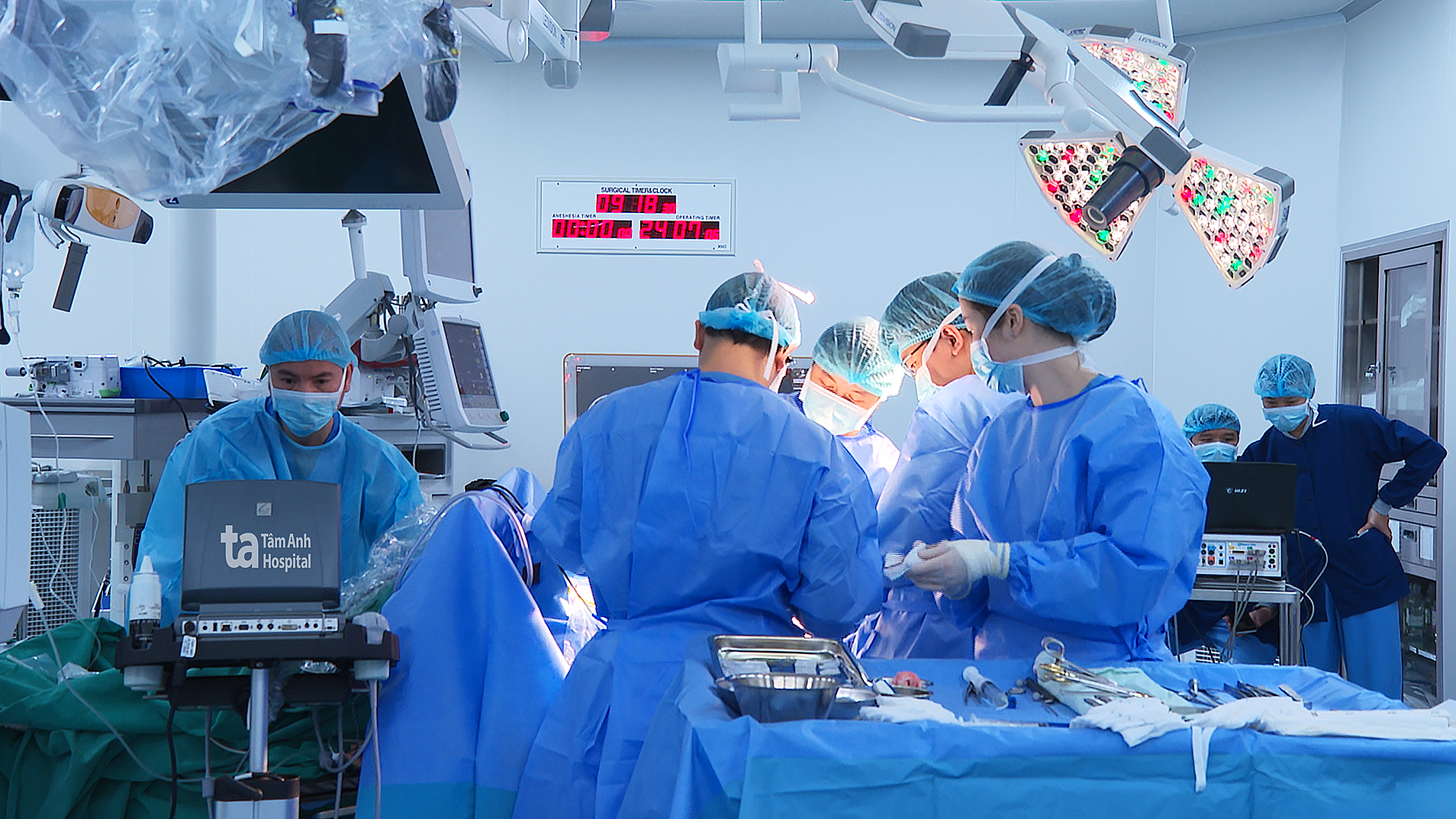Hoang's swallowing difficulties began almost a year ago. Without accompanying fever or sore throat, he didn't seek medical attention. However, in the last two weeks, the left side of his jaw swelled, revealing a hard, immobile, and painless lump. An MRI at Tam Anh General Hospital in Hanoi revealed a nearly 5 cm tumor in Hoang's left parapharyngeal space (throat area).
Dr. Le Van Ngan, from the Department of Neurosurgery and Spine, explained that the tumor was pushing against the tonsils and extending down the left palate, directly compressing cranial nerves 9, 10, 11, and 12. These nerves control vital functions such as gag reflex, swallowing, tongue movement, and throat control. The tumor was also compressing the internal carotid artery and vein, major blood vessels supplying the brain.
 |
An MRI scan reveals a large tumor in the throat area. Photo: *Tam Anh General Hospital* |
"Early surgery, while the tumor is still well-defined, is the only way to completely remove it while preserving vital blood vessels and nerves," Dr. Ngan stated. He added that Hoang's tumor's proximity to the carotid artery made the surgery complex, with high risks of blood loss or sudden stroke. Without timely surgery, the growing tumor could further invade, attaching to the carotid artery and nerves, potentially leading to swallowing difficulties, tongue paralysis, sudden stroke, or permanent cranial nerve damage.
The surgical team used a microscope to clearly distinguish the tumor from the surrounding healthy tissue. Continuous intraoperative neuromonitoring (IONM) alerted the surgeons if they touched a healthy nerve, allowing for real-time adjustments.
 |
The surgical team operating on the patient. Photo: *Tam Anh General Hospital* |
After three hours, the tumor was completely removed. Hoang regained consciousness with normal swallowing reflexes, no hoarseness, and no tongue paralysis. After 7 days of post-operative care, Hoang was discharged, able to eat, drink, and carry out daily activities as before, without further rehabilitation.
Parapharyngeal space tumors often develop silently and are easily mistaken for common stomach or throat ailments. Dr. Ngan noted that many individuals experience only mild swallowing difficulties, sometimes accompanied by hoarseness or pain radiating to the ear, often misinterpreting these symptoms as a sore throat or acid reflux and self-medicating. While symptoms might temporarily subside, the tumor continues to grow, potentially compressing cranial nerves or invading crucial blood vessels.
Dr. Ngan recommends that anyone experiencing persistent swallowing difficulties, choking while eating or drinking, a persistent cough, or unexplained hoarseness should consult a neurosurgeon or an ear, nose, and throat specialist.
Linh Dang
*The patient's name has been changed.
| Readers can submit questions about neurological conditions here for doctors to answer. |












